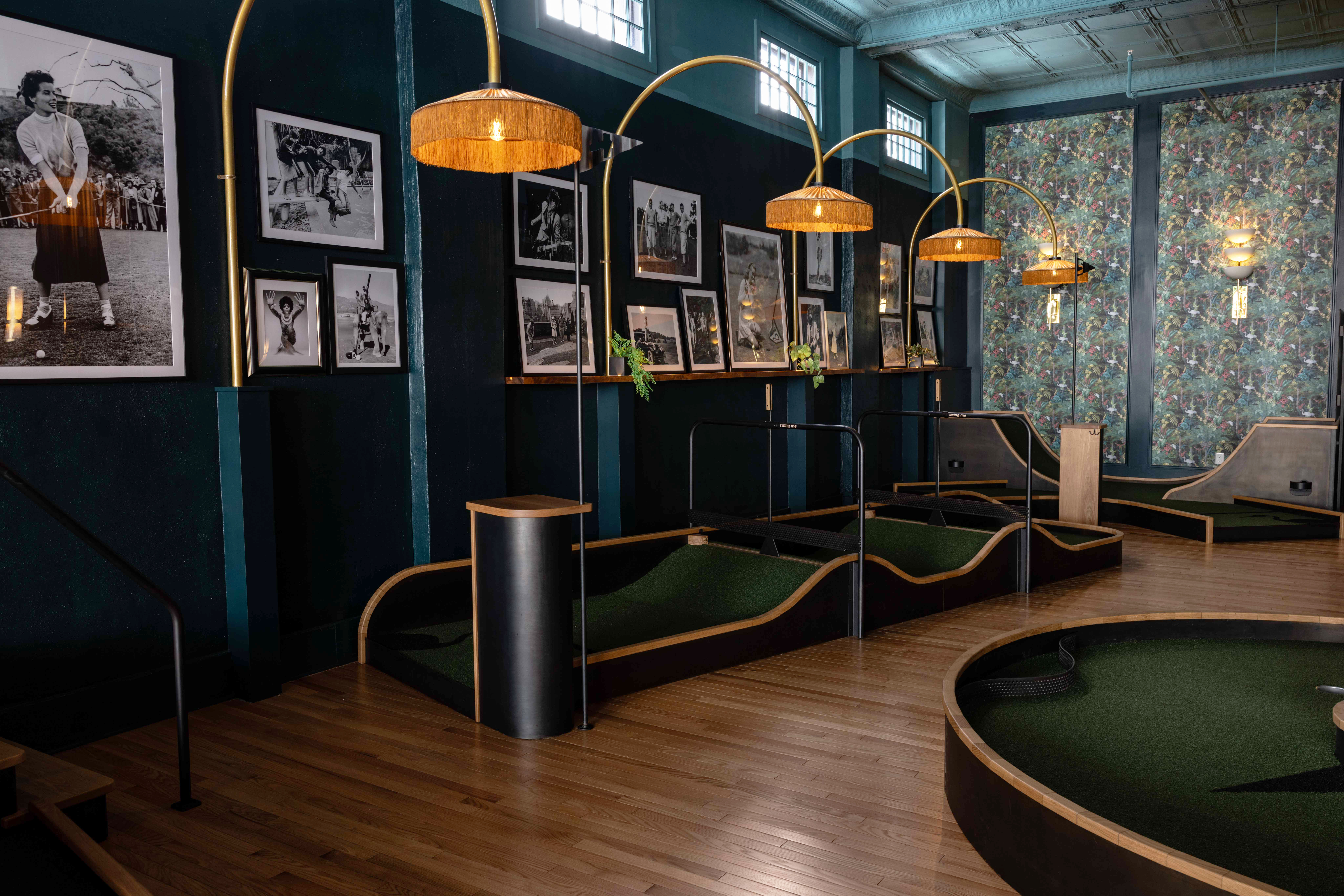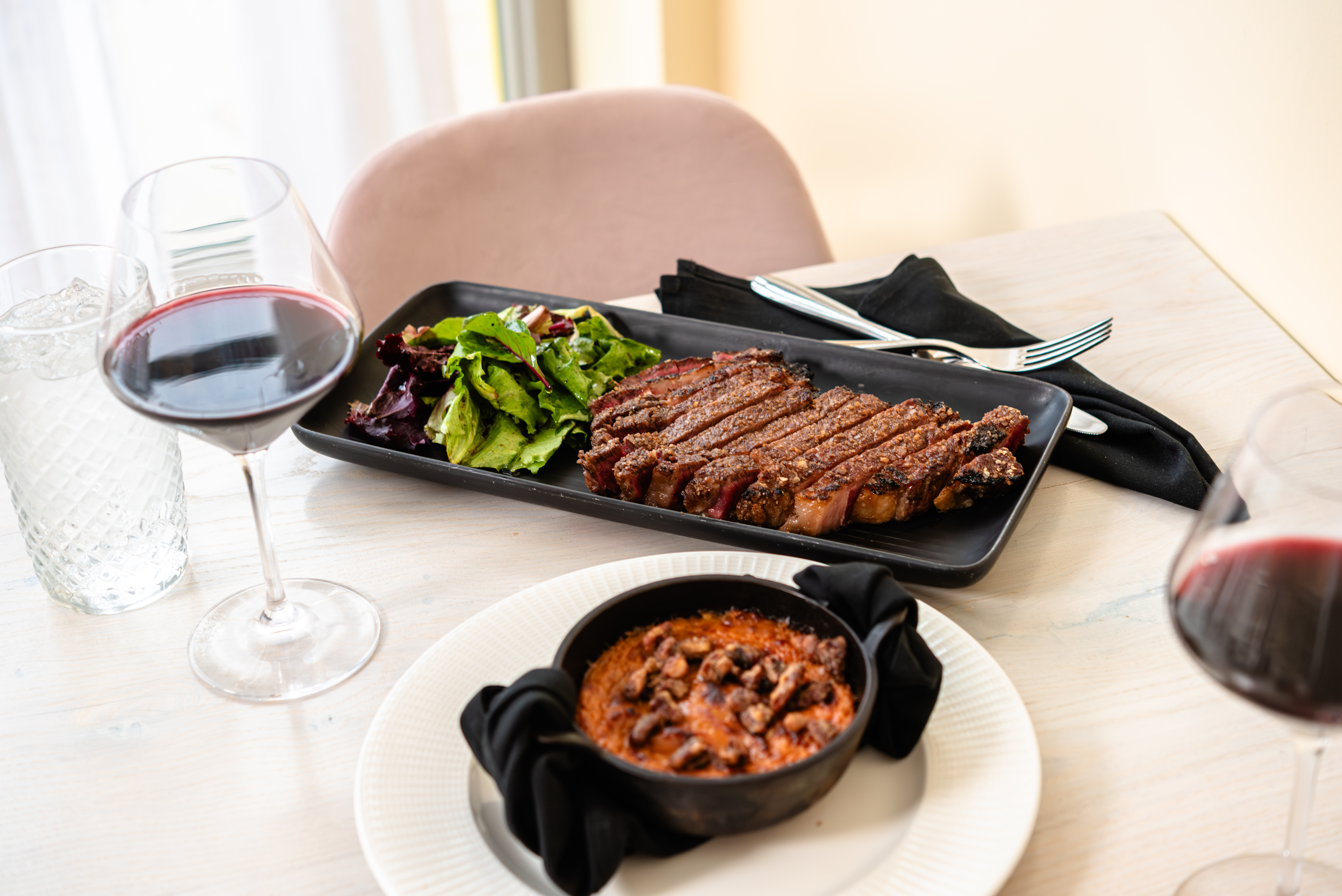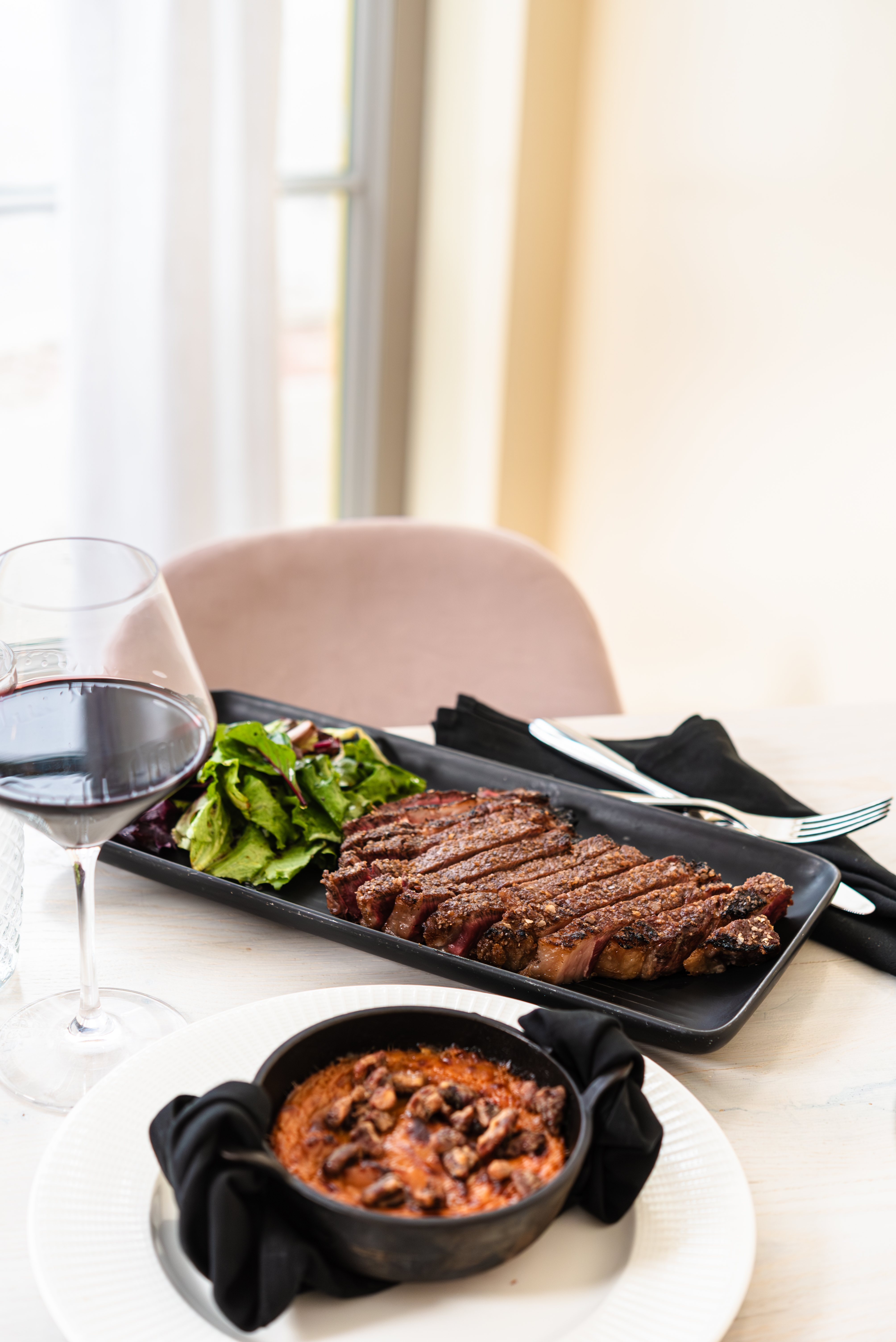Foolish enough to show up without a reservation, we are told the wait is an hour and a half. We’re handed one of those flashing, vibrating chain-restaurant disks (we’ll chalk it up to just how bustling this place can be) and head for the bar for beverages and a bit of standing room. When two stools open, we pounce, and watch the fashionable, multigenerational crowd.
At 10:30 p.m., we’re finally digging into our entrées, and there’s still not an empty seat in the house. Even more astonishing, couples are still walking through the door.
This is not how Clevelanders usually behave. Local chefs and restaurateurs often complain that everyone wants to eat early and there’s no second wave of late-night diners. But not here. Owner Andy Himmel and executive chef Matthew Mytro — who also work together at Boulevard Blue —seem to have found the magic formula.
It likely starts with Paladar’s location at Eton Chagrin Boulevard. The popular East Side shopping destination is easily accessible from just about anywhere. Parking is free, and there’s even valet service.
Being one of the only rum bars in town certainly adds to the draw. The large list of molasses-distilled spirits is an education: Rums come white, gold or dark and aged; flavored and spiced; from Barbados, Bermuda, Jamaica and St. Croix. Flights of three 1-ounce pours are ideal for sampling ($7-$15). There are also some fine sipping tequilas, mojitos, caipirinhas and a flock of other tropical drinks, including nonalcoholic fruit nectars ($4) and a soda made with vanilla syrup and fresh mint ($4.50).
Background music with a beat (bands play on Thursday nights) and a décor defined by a rococo exuberance create a lively vibe. Splashes of red accent the mostly black walls, one sporting an eye-catching piece of sculptural plasterwork that looks like draped fabric. Silver foil paper gift-wraps column tops, and glittery starbursts reminiscent of Christmas decorations hang from the ceiling.
Colored spots change every few minutes, creating a light show in shades of green, purple and orange. And in the main dining area, against a backdrop of molcajetes (a short-legged stone mortar sometimes called an Aztec blender), cooks smash fresh avocados for made-to-order guacamole ($4).
Which brings me to the food, another reason for Paladar’s broad appeal. Inspired by cuisines from the Caribbean and Central and South American cultures, Paladar features condiments and preparations found in only a handful of local ethnic eateries.
But Mytro knows his audience. He opts for approachability over adventurousness so as not to scare off diners.
In the menu’s Latin Comfort section, traditional dishes are reconfigured to suit American palates. The Inca stew, a Spanish-speaking bouillabaisse, is a homey, satisfying bowl of mussels and shrimp simmered with diced sweet potatoes and onions in a light, milky coconut broth spiked with lime juice ($16).
Slow-smoked chicken is imbued with a bit more bite but no burn ($15). It’s roasted with garlic, shredded, smothered with ají pepper sauce and then put in the smoker where the flavors meld and deepen. The plantains that come with it are sweet as candy, but the cornmeal arepas were flavorless.
Everyone raves about the rum-glazed slow-roasted pork Cubano ($15.50), but I think it plays second fiddle to the kicky Cuban ropa vieja ($8.75). This braised beef starter — enough for a small entrée — is rich with a tangy tomato and chili sauce made with the semi-hot ají pepper.
In fact, there are so many standouts among the appetizers that you could forgo a main course and order a few as a small-plate meal. The tiny tacos are a must ($9.50). Luscious smoked mahi mahi, tucked into crisp, red-veined malanga root “boats,” has a big, almost meaty taste. The papusa, a Salvadoran version of a burger ($7), features zesty chorizo sausage and mild chihuahua cheese between two cornmeal cakes.
Best of all is the ceviche. Available individually ($8-$11) or as a trio ($13), this superb marinated fish appetizer is complex, creative and beautifully plated. Plump shrimp, blanched in a court bouillon, are soaked in a puree of tamarind, citrus juices and pickled garlic. Tuna partners with watermelon, and the two are pretty, crunchy, aromatic and simultaneously sweet and hot — the result of a basil, fruit and chili vinaigrette. In the third iteration, salmon takes on a touch of ginger, red onions, cilantro and pineapple.
But the sofrito-basted scallops ($21), listed among the Nuevo Latino entrées, is where Mytro cuts loose.
In this innovative and excellent preparation, the mollusks are lacquered with a baste made from the pulp of onions, yellow and habanero peppers, tomatoes and vinegar. Thin, small potato rounds are tossed with tiny multihued cauliflower florets and finished with a delicate Peruvian Huacaina cheese sauce. This is the chef’s favorite dish on the menu, and I can’t help but concur.
When it comes to dessert, I never resist flan, and the coconut-flavored one here ($8) is delicious. People have told me the bread pudding is terrific too, but it was sold out — a sure sign that what I heard is true.
Not everything I tried reflected Mytro’s usually deft touch. The black bean empanada, for example, was doughy, its filling both bland and in short supply. The fried calamari was greasy and the accompanying chimichurri dipping sauce was oily, lacking a characteristic intense herbal burst or enough vinegar to act as a counterpoint.
I loved the smoky corn grits but found the grilled fish “on the plancha” they came with forgettable.
When I mentioned these concerns, Mytro said he’s still tweaking the menu, eliminating some things and reinventing others.
Service is well-meaning if sometimes less than polished, and every effort is made to please. A dish too spicy for my companion was graciously replaced with something else, and when the manager was informed we weren’t taking our leftovers home, he came over to ask if there was a problem and how he could make it right.
Paladar offers something new and different for the local scene. But not too new or too different. And that’s clearly the way to win Clevelanders’ hearts and appetites.
Trending
-
1
-
2
-
3
-
4
-
5










